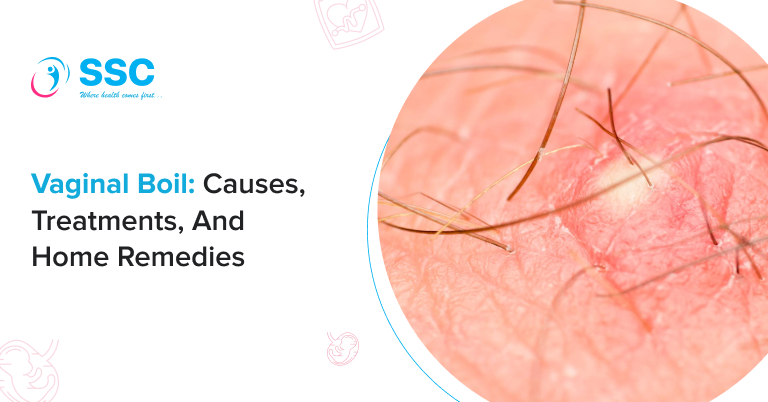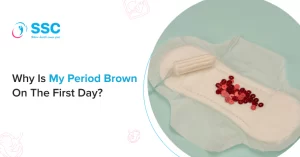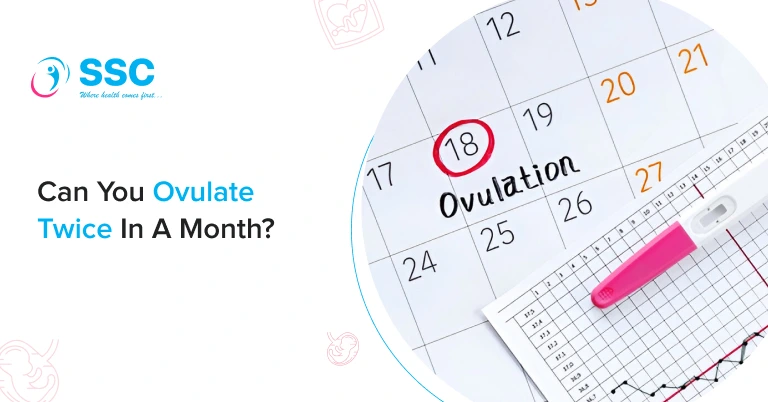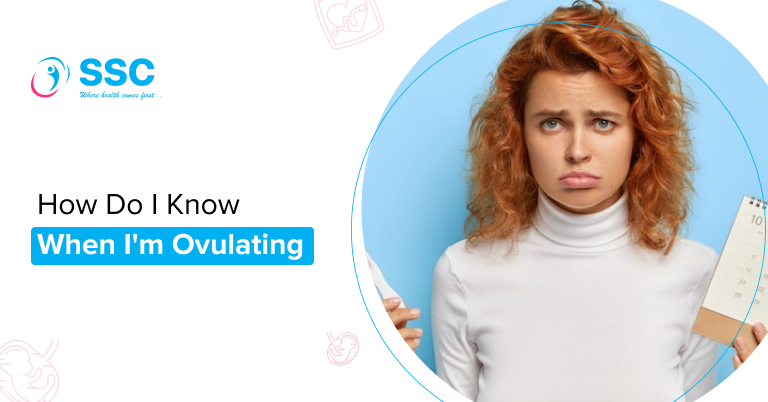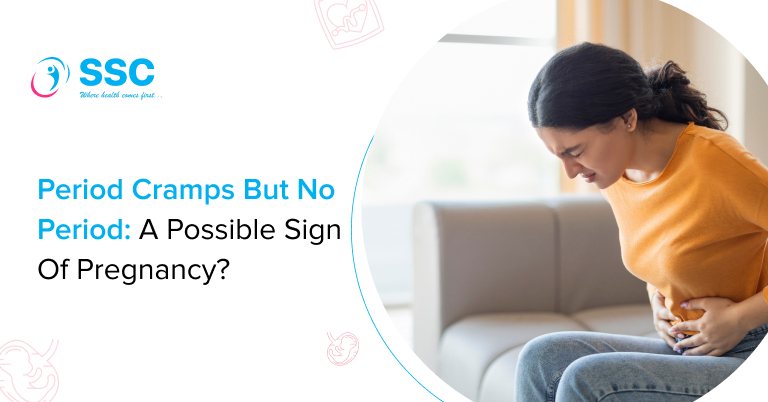What are Vaginal Boils?
Vaginal boils are pus-filled bumps that form when a hair follicle or oil gland gets clogged in the genital area. They usually appear in the groin area, including the skin folds, labia, and around the vaginal opening. Although they are near the vagina, they form on the vulva, which is the outer part of the genital area.
Vaginal boils can be red, swollen, and painful. Most go away on their own with home care, but sometimes, you may need medical treatment.
This article covers what causes vaginal boils, symptoms, home remedies to help them heal, and medical treatments.
What is Vaginal Boil looks like?
A boil usually starts as a small, red bump resembling a pimple. It can become swollen and painful as it grows, developing a white or yellow pus-filled centre.
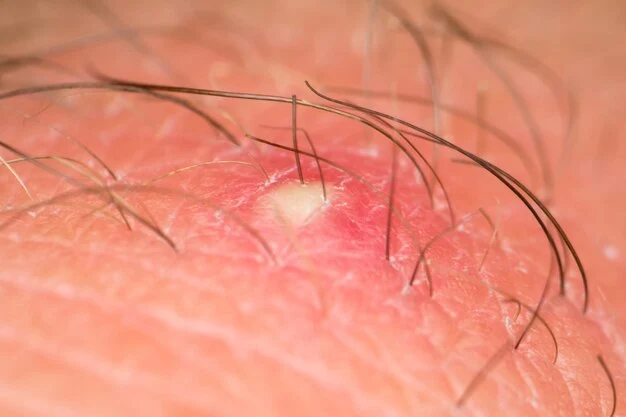
Causes of Vaginal Boils
Bacterial Infection
Vaginal boils are most frequently caused by bacterial infections, especially those caused by Staphylococcus aureus. This bacterium enters through minor cuts or hair follicles, leading to painful swelling.
Clogged Sweat Glands
Blocked sweat glands can cause repeated boils in the vaginal area. This condition, known as hidradenitis suppurativa, can lead to recurring abscesses and scarring.
Waxing
Waxing pulls hair out from the root, leaving the hair follicle open. If bacteria get inside, it can cause an infection and lead to boils.
Ingrown Hairs
Shaving or waxing the pubic area can lead to ingrown hairs, which can become infected and turn into painful boils.
Weakened Immune System
People with weakened immune systems due to diabetes, obesity, or other health conditions are more prone to developing boils.
Poor Hygiene
Lack of proper hygiene can create an environment for bacteria to thrive, increasing the risk of infection.
Friction and Tight Clothing
Wearing tight underwear or clothing can cause irritation and chafing, leading to folliculitis and, eventually, boils.
Bartholin Cyst
A Bartholin cyst occurs when the Bartholin glands, located on either side of the vaginal opening, become blocked and form a fluid-filled lump. If infected, the cyst can develop into an abscess, resembling a boil and causing significant discomfort.
Symptoms of Vaginal Boils
Vaginal boils usually start as small bumps that look like pimples or skin irritation from shaving. As they grow, they can become painful and cause discomfort or signs of infection.
- A small, red, painful lump near the vaginal area
- Swelling and tenderness
- Formation of a white or yellow pus-filled head
- Fever or swollen lymph nodes (in severe cases)
- Pain while sitting, walking, or wearing tight clothes
Simple Steps to Avoid Vaginal Boils:
You can’t always stop boils from happening, but these tips can help you lower the risk:
- Don’t share personal items: Boils can spread through things like razors, towels, and washcloths. Always use your own items to stay safe.
- Wash your hands: Before and after touching your private area, wash your hands with soap. This helps stop germs from spreading.
- Gently scrub your pubic area: Lightly exfoliating (scrubbing) your skin helps remove dead skin cells and can stop ingrown hairs from forming.
- Trim instead of shaving: Cutting your pubic hair with clean scissors is gentler on your skin. If you shave, use a new razor every 3 to 4 weeks and apply shaving cream or lotion to protect your skin and avoid cuts.
Medical Treatments
If a vaginal boil gets too large or infected, immediate medical attention is required. Here are some possible options:
Antibiotics
If bacteria are causing the infection, your doctor may prescribe antibiotics like amoxicillin, clindamycin, or doxycycline to help treat it. Be sure to take all the medicine, even if the boil starts improving, to prevent the infection from coming back.
Drainage Procedure
If a boil doesn’t heal on its own, a doctor may need to drain the pus. It’s a simple procedure: The doctor numbs the area, makes a small cut, and removes the fluid. This helps reduce pain, speed healing, and prevent the infection from spreading.
Antibacterial Creams
Your doctor may suggest using an antibiotic ointment, like mupirocin or fusidic acid, to help fight bacteria and heal the skin. It’s usually applied two to three times a day as directed.
Home Remedies for Vaginal Boils
Vaginal boils can be uncomfortable, but most go away on their own with basic home remedies. If you want to heal faster and reduce discomfort, here are some home remedies that can help. However, if the boil gets too large, doesn’t heal, or keeps coming back, it’s best to see a doctor.
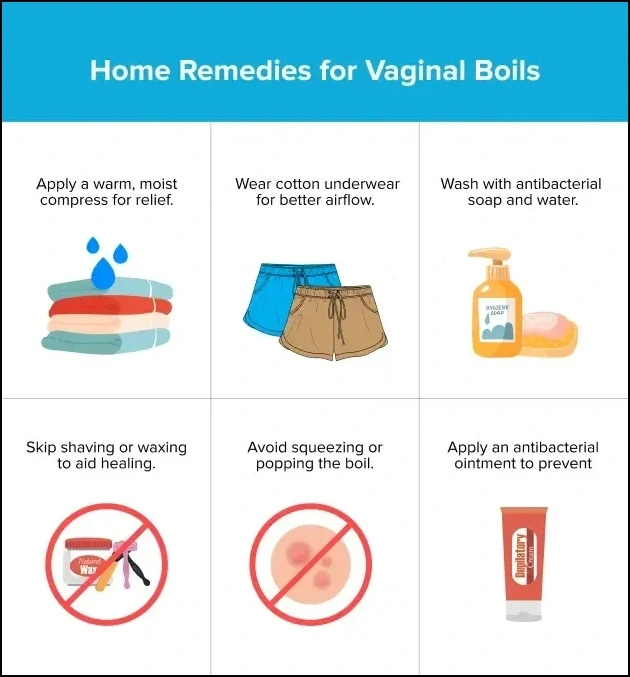
Warm Compress
Applying heat to the area is one of the easiest and most effective ways to help a boil heal. The warmth increases blood flow, bringing infection-fighting cells to the site and encouraging the boil to drain naturally.
How to Do It:
- Dip a clean washcloth in warm water and squeeze out the extra water.
- Place it gently over the boil for about 10–15 minutes.
- Do this 3–4 times a day until the boil starts to shrink and drain.
Tea Tree Oil
Tea tree oil is well-known for its strong antibacterial properties, which can help fight the infection causing the boil.
How to Do It:
- Before using tea tree oil on your skin, always dilute it. Mix a tablespoon of coconut or olive oil with five drops of tea tree oil.
- Gently apply the mixture to the boil using a cotton swab.
- Repeat this 2–3 times daily until the boil starts to heal.
- Avoid undiluted tea tree oil, which can be too strong and cause irritation.
Turmeric Paste
Turmeric is a natural healer known for its anti-inflammatory and antimicrobial effects. It can help lower the swelling and accelerate the healing process.
How to Do It:
- Mix turmeric powder with some water or coconut oil to form a paste.
- Add the paste to the boil and let it sit for 20 to 30 minutes.
- Rinse with warm water and repeat twice a day.
Aloe Vera Gel
Aloe vera is well-known for its cooling and healing effects. It can help relieve pain and reduce inflammation while promoting skin repair.
How to Do It:
- If you have an aloe vera plant, remove a leaf and use the fresh gel. You can also buy pure aloe vera gel from the shop.
- Apply the gel directly to the boil and let it absorb.
- Repeat 2-3 times a day for the best results.
Epsom Salt Bath
Soaking in an Epsom salt bath can help soften the skin, reduce swelling, and encourage the boil to drain naturally.
How to Do It:
- Add 1-2 cups of Epsom salts to a bathtub filled with warm water.
- Soak in the bath for about 15–20 minutes.
- Repeat daily until the boil starts to heal.
Maintaining Hygiene
Good hygiene plays a significant role in preventing and healing boils. Keeping the affected area clean and dry can stop the infection from spreading and speed up recovery.
How to Do It:
- Use warm water and mild soap to cleanse the area gently.
- Gently dry with a clean towel without rubbing to avoid irritation.
- Wear loose, breathable cotton underwear to prevent friction.
- Don’t pop or squeeze the boil, which can worsen the infection.
When to See a Doctor
Some vulvar boils may heal on their own, but others might need medical attention. Consult a doctor if you have any of the following symptoms:
- The boil doesn’t go away after a week.
- The boil heals but comes back.
- You get a fever, with or without redness spreading from the area.
- You often get vulvar boils.
- You have a lot of pain or discomfort.
Final Thoughts
Vaginal boils occur when bacteria infect a blocked follicle or oil gland, causing pain and swelling. Larger boils may require medical attention, whereas smaller ones may heal with warm compresses and proper hygiene.
Keeping the pubic area clean and not exchanging personal objects will help prevent them, but consult a doctor if they continue to occur.
Frequently Asked Questions
Are They Contagious?
No, vaginal boils are usually not contagious, but if caused by bacteria like Staphylococcus, they can spread through direct contact or sharing personal items.
How long does a boil last?
Most boils heal within 1 to 2 weeks, but larger ones may take longer or require medical treatment.
Why do I keep getting boils on my private areas?
Recurring boils can be due to friction, ingrown hairs, poor hygiene, weakened immunity, or bacterial infections like Staph.
How to get rid of Vaginal boil?
Apply warm compresses, keep the area clean, avoid tight clothing, and use antibacterial soap. If severe or persistent, consult a doctor for antibiotics or drainage.
Can I squeeze a boil near my vagina?
No, squeezing can spread infection, cause scarring, or worsen inflammation. Let it heal naturally or seek medical advice if needed.

